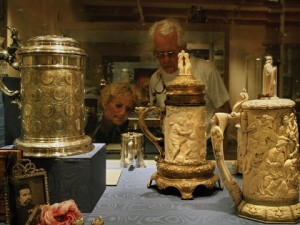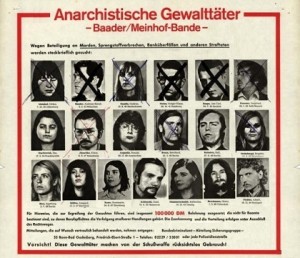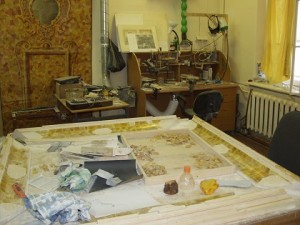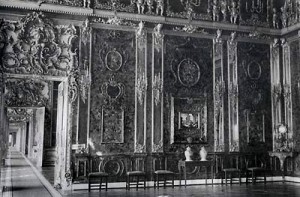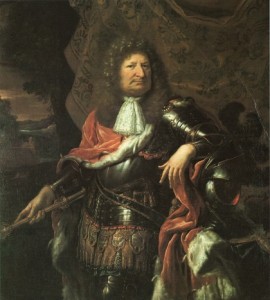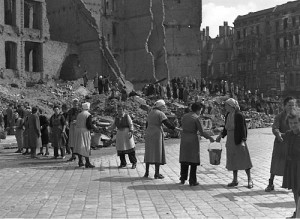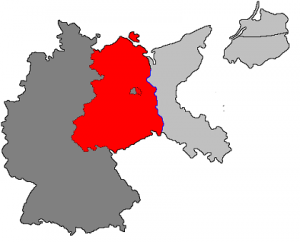The origins of German beer steins date back to the 14th century. As a result of the bubonic plague and several invasions of flies throughout Europe shortly thereafter, Germany established several laws in the early 16th century requiring that all food and beverage containers (in our case it's beer steins) be covered to protect their contents. The … [Read more...]
German Shepherd – The Ultimate Service Dog
"The most striking features of the correctly bred German Shepherd are firmness of nerves, attentiveness, unshockability, tractability, watchfulness, reliability and incorruptibility together with courage, fighting tenacity and hardness." - Max von Stephanitz, Father of the German Shepherd Dog The German Shepherd Dog (GSD) is a versatile … [Read more...]
German Cars
The cars are used so extensively nowadays, that they tend to turn into a separate cultural subcategory, especially where the German culture is concerned. The exteriors always define the first impression. That is why people purchase expensive vehicles, committing money rather to the brand image of a car than to the perfect technical devices, or … [Read more...]
Terrorism in Germany – Baader-Meinhof Gang
During the years of 1968-1977 Germany lived in fear. Three terrorist groups - the Red Army Faction (RAF), Movement 2 June, and the Revolutionary Cells (RZ) - gathered about a hundred Germans as their members. The Baader-Meinhof Gang, who called themselves the Red Army Faction, and two other terrorist groups went killing dozens of people. In 1968 … [Read more...]
The Amber Room Reconstruction
In the early 1980s, serious work on recreating the Amber Room based on old photographs and reminiscences was undertaken in the Catherine Palace, but the lack of funds threatened to put an end to the works. The process was left to the fate, but it seemed to be merciful to the Amber Room's re-creators. Ruhrgas AG, Essen, Germany, made it possible to … [Read more...]
The Amber Room: History of the Creation
The history of the Amber Room dates back to the very beginning of the 18th century, when Andreas Schluter, the chief architect of the Prussian royal court, had the idea of using amber, a material never before used for interior decoration, to complete one of the rooms of the Great Royal Palace in Berlin during the reconstruction under Frederick I. … [Read more...]
Intrigue and Mystery of the Amber Room
The mystery of what is generally considered to be the greatest of the missing treasures of Europe - the Amber Room - is still unsolved. However, Europe does not give up, and the searches continue... The Amber Room is surely one of the most original and - since its disappearance in 1944 in the aftermath of the WWII - mysterious of the world's works … [Read more...]
Prussia 2001
On January 18, 1701 Friedrich III, Elector of Brandenburg (11.07.1657 - 25.02.1713), crowned himself as King in Prussia. Today, exactly 300 years after this outstanding event, the government heads of Berlin and Brandenburg, Mr. Diepgen and Mr. Stolpe, officially opened the celebrations on the occasion in the Berlin theater on Gendarmenmarkt. During … [Read more...]
Women in Post-War Germany
Post-War life for German women was harsh. Trümmerfrau (literally translated as ruins woman or rubble woman) is the German-language name for women who, in the aftermath of World War II, helped clear and reconstruct the bombed cities of Germany and Austria. With hundreds of cities having suffered significant bombing and firestorm damage through … [Read more...]
East Germany
What is 'East Germany'? This question arises not just from political background of the country, but historical, too. Postwar society used to name Soviet GDR as 'East Germany': lands of Prussia, Silesia and Pomerania belonged to former GDR and located in the east of the Oder. Historically these lands were inhabited by Germans, but after the World … [Read more...]
